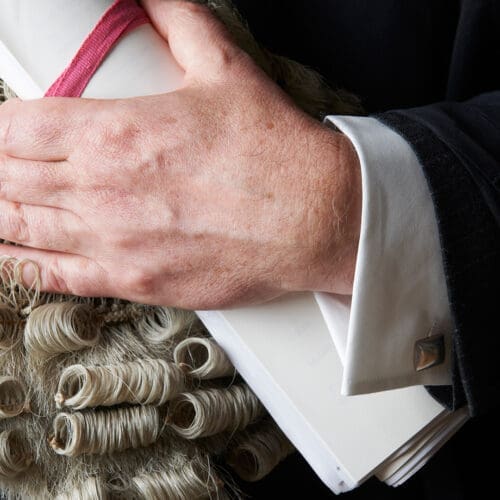After Mazur: How the Law Society, CILEX, and LSB are redrawing the lines on litigation conduct
November 2025The recent Court of Appeal decision in Mazur & Stuart v Charles Russell Speechlys LLP (Mazur) has sharpened focus on one of the reserved legal activities under the Legal Services Act 2007 (LSA 2007): the “conduct of litigation.” Its implications are now being felt across law firms, in-house teams and regulatory bodies. You can find more details of the Mazur decision in our previous article:
Court’s Decision
To recap, the judgment in Mazur reaffirmed that the right to conduct litigation attaches to the individual, not the firm. In other words, an employee of a law firm cannot lawfully conduct litigation simply by virtue of being employed within an authorised firm or acting under the supervision of an authorised person. The court stressed that where a non-authorised individual assumes responsibility for litigation tasks, they may be acting unlawfully.
Law Society Guidance
In response, the Law Society has issued a emphasising:
- Who is authorised: solicitors with practising certificates, barristers with rights of audience, Chartered Legal Executives with litigation rights and other specifically approved professionals. Employment or supervision alone does not confer authorisation.
- What constitutes “conducting litigation”: issuing or serving proceedings, acknowledging service, signing/filing statements of case, making strategic decisions and corresponding with the court as a party’s representative. NB as a reminder, none of this applies to pre-action steps.
- What is “litigation”: this includes all courts and certain tribunals, including the upper tribunal and the first-tier tribunal (across various chambers). Consequently, the Employment Tribunal, Employment Appeal Tribunal and the Solicitors Disciplinary Tribunal (plus other similar disciplinary bodies) are not covered for the purposes of the LSA 2007.
However, “assisting” in litigation is permitted by non-authorised persons. This includes drafting, research, preparing bundles, instructions to counsel, instructing experts, taking and preparing witness statements, dealing with disclosure, gathering evidence and other administrative tasks. These tasks can be carried out by non-authorised persons only where an authorised person assumes final responsibility and undertakes the formal step.
It is important to note that this can be fact specific. Agassi v Robinson (Inspector of Taxes) (Costs) established that the legislative definition of “conducting litigation” must be interpreted narrowly; therefore, only formal steps in proceedings are covered. Meanwhile, Ellis v Ministry of Justice confirmed that a combination of activities can amount to a person “driving” the case, and therefore “conducting litigation”.
Regulatory Pressure and CILEx Response
This case has been front page news for most of the legal press since it was handed down, and the regulators have been equally busy. For CILEX members in particular, the judgment and its potential ramifications have caused significant concern.
Although the SRA’s public statement on the matter can neatly be summarised as ‘nothing to see here’, the Legal Services Board (LSB) has been more proactive, urging frontline regulators to clarify boundaries and ensure the profession is properly informed. It will be undertaking a significant review of the advice previously given by regulators and representative bodies, with its findings expected in March 2026.
In parallel, CILEx Regulation submitted a fast-track application to the LSB to grant its members standalone litigation rights (i.e. without also obtaining advocacy rights) which was granted on 3 November 2025, meaning CILEX members with Fellowship status can now apply to obtain standalone litigation practice rights. Whilst that will be welcome news for many and will go some way towards resolving matters, it seems likely that there will be a very high volume of applications which might take some time to process. Further, there are many CILEX members who feel disappointed that they need to prepare a portfolio to be permitted to undertake work which, in practice, they have already been doing for years, rather than the LSA 2007 being amended.
Practical Steps for Firms
In the meantime, there are a number of practical steps firms should take to ensure they don’t fall foul of the LSA. These include:
- Audit of roles: Firms should review who is carrying out litigation tasks and whether they are authorised to do so, as well as any policies around supervision.
- Supervision systems: Ensure clear lines of responsibility, evidence of review and approval, and that authorised individuals are genuinely exercising judgment.
- Training: Make sure all staff involved in the litigation process are trained on the relevant policies and procedures, understanding clearly how supervision and review works. Ensure that supervision undertaken in accordance with those policies and procedures is clearly documented.
Conclusion
Mazur has exposed a longstanding grey area in the delivery of litigation services. The Law Society’s practice note brings some clarity (although we await any regulatory response to the guidelines from the SRA), while CILEx’s fast-track bid for litigation rights signals that the regulatory framework itself may evolve in response.
For now, law firms must act with caution: ensure reserved activities are only carried out by authorised persons, strengthen supervision requirements and prepare for possible changes in how litigation rights are distributed across the profession.
If you are unsure as to how this ruling and the Law Society practice note will affect you and your business, or you would like to discuss any of the points raised in this article, please contact one of the authors or your usual Beale & Co contact.
Download PDF








